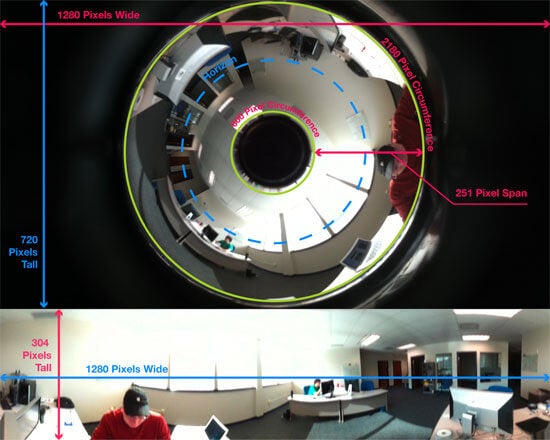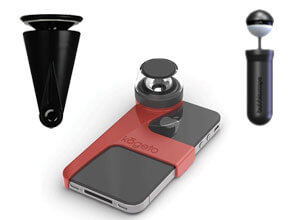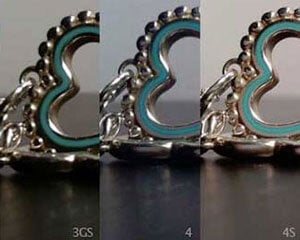360° Panoramic Video Lets You Capture Everything Around You With Your Smartphone

Share
Have you ever recorded video of an important event with your smartphone only to discover later that people were out of frame or the video was shaky from frantically panning it around? What you need is a way to record everything around you at the same time. Now, a trio of cool smartphone accessories — the GoPano Micro, Kogeto Dot, and the BubbleScope — can do just that. By capitalizing on the video quality of the iPhone 4, these accessories make it easy to record panoramic video, edit it, and share it with others.
And that means you can simply "put down the camera and join the party," as an ad for the Dot suggests.
One way to think about cameras is not what they capture, but what they don't. Rather than leaving it up to the choice of the person recording the video or the inherent limitations of the camera lens, panoramic video allows each viewer to decide what they want to see and what they don't. The same panoramic video of a wedding records both the bride walking down the aisle and the expressions on everyone's faces as she does, allowing for interactive viewing that still images or regular video cannot provide.
Apps like 360panorama let you take panoramic images with a smartphone simply by spinning around in a circle, but to record panoramic video in real time, a specially curved lens is needed to capture the 360° view simultaneously. Fortunately, there's three to pick from.
EyeSee360, makers of the GoPano, converted its curved lens technology from a DLSR camera attachment to a smartphone accessory called the GoPano Micro, with the help of a successful Kickstarter run last year. Using a custom case, the Micro attaches over the iPhone camera and funnels in light from the curved lens to a mirror, which directs the complete image onto the iPhone camera. An app transforms the video (by unwarping it) for easy viewing with interactive pan and zoom, and a free site hosts the Flash video files for sharing across the web.
Similar to the GoPano Micro, the BubbleScope "transforms your phone into a 360° panoramic imaging device," according to British inventor Tom Lawton. Fueled by a CrowdFunder pitch last year, the BubbleScope is more compact than the Micro, will take still images, and records 120° vertically as opposed to the Micro's 82°. Interestingly, 5 years ago it was envisioned as a separate device, but the momentum in camera technology, as with many other things, is toward ease of use and sharing, and that means adapting to smartphones. Although it isn't on the market quite yet, the website indicates it will retail at around $100 versus Micro's $80. You can watch Tom explain how it works here:
Both the GoPano Micro and the BubbleScope allow you to record video with the phone upright, so you can view the panoramic as it records. But the Kogeto Dot takes a different approach by placing the mirror orthogonal to the iPhone, which means that the phone must be kept horizontal to record the scene around you, so you can't view video as its recording. This may be a disadvantage to some, but it also means that the phone can be easily set down during recording without needing a tripod to hold it up. Although the Dot has lower resolution than the Micro, it has a sleeker design and comes in a variety of colors (black, red, pink, and green). Additionally, Kogeto recently dropped the Dot's price on its website from $79 to $49, making this even more accessible to the masses. If you need more gritty details, Macworld has a detailed feature and video comparison of the GoPano Micro versus the Kogeto Dot.
It's pretty amazing how much this technology has changed in such a short time. Traditionally, panoramics required multicamera setups, just as Raoul Grimoin-Sanson first demonstrated in 1900 at the Exposition Universelle in Paris. Even today's most popular panoramics, Google Street View, use multicamera systems and stitch the images together. The beauty of curved lenses is that no stitching is required. Over the last few years, curved lenses have enabled recording 360° with DLSR lens attachments, Kinect hacks, stand alones like Yellowbird, or makeshift DIY approaches, and even point-and-shoot cameras, like the Sony Bloggie, have introduced panoramic lens accessories.
Be Part of the Future
Sign up to receive top stories about groundbreaking technologies and visionary thinkers from SingularityHub.


At the same time, entrepreneurs started making lens attachments for smartphones, such as wide angle and fisheye lenses from photojojo and Olloclip, for example. Many began on Kickstarter and continue to. In fact, a current Kickstarter project called Magnifi connects an iPhone to anything with an eyepiece, such as microscopes, binoculars, or telescopes. So it's only logical that we would see panoramic lenses dump the camera and get outfitted for smartphones.
But it was the camera on the iPhone 4 that allowed the image quality to be good enough for panoramic recording (although a recent tweet by Tom indicated that he wasn't content with launching BubbleScope until the iPhone 4S arrived). The iPhone camera technology has improved significantly through each iteration, and increased demand for better smartphone cameras will likely translate into even more mobile users trying out panoramic images and video.
In fact, advances in camera technology could usher in panoramic lenses as a built-in standard of next-generation smartphones, especially as phone manufacturers strive to pack more value into their product lines and consumer demand for an all-in-one imaging device continues to grow. In the near future, each of these attachments could be miniaturized and engineered into the phone itself, so that activating the function pops out a small panoramic lens either on the surface or the edge of the phone.
And why is panoramic the future? If we look at the world around us as being full of data, think of how much data are "lost" taking regular video, or worse, a single image? Consider how much Street View data Google has captured - the legal data, not the Wi-Fi hacking stuff - with its fleet. Now imagine millions of people capturing the world around them with panoramic video. And that's just for personal use. What will panoramic video do for the surveillance industry, which is constantly looking for better ways to capture and process video?
The GoPano team has stated that "It's been our vision for more than a decade to make panoramic video as commonplace as traditional video." With the technological strides being made, it's clear that day is fast approaching.
[Media: BubbleScope, Campl.us via Gizmodo, GoPano, Kogeto, YouTube]
[Sources: BubbleScope, CNET, GoPano, Kickstarter, Kogeto, MacWorld, PBS]
David started writing for Singularity Hub in 2011 and served as editor-in-chief of the site from 2014 to 2017 and SU vice president of faculty, content, and curriculum from 2017 to 2019. His interests cover digital education, publishing, and media, but he'll always be a chemist at heart.
Related Articles

This Portable Wind Turbine Is the Size of a Water Bottle and Charges Devices in Under an Hour

Mojo Vision’s New Contact Lens Brings Seamless Augmented Reality a Step Closer
The Weird, the Wacky, the Just Plain Cool: Best of CES 2020
What we’re reading



